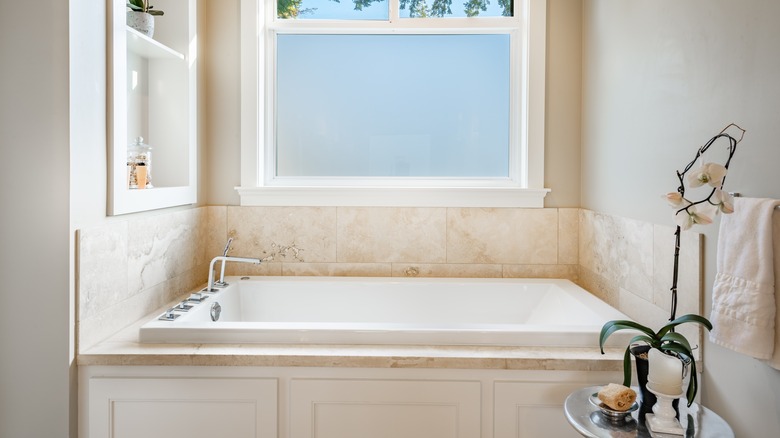When To Choose Travertine Tiles Over Pavers For Your Projects
If you're looking to upgrade your home with natural stone, travertine may be a great option to save on costs upfront. Known for its strength and durability, travertine is usually cheaper than other natural stones like granite and marble. But the key to getting the most out of this material is knowing when to pick travertine tiles over pavers. Overall, you should use travertine tiles instead of pavers when installing them indoors or if you're placing them over a sturdy surface like concrete outside.
Travertine itself is a type of limestone that is known for its natural beauty. It comes in soft earth tones like brown and warm golds but it can also be found in silver, ivory, and other shades. As far as materials go, travertine is pretty durable since it's resistant to extreme temperature changes. It doesn't retain heat and it can withstand freeze-thaw conditions.
Since travertine tiles and pavers come from the same material, they share the same benefits. However, travertine tiles are much thinner than pavers, at about a ½ inch thick compared to 1¼ to 2 inches thick. This makes travertine tiles preferable for indoor projects like flooring and countertops because it needs to be installed with grout. Pavers, on the other hand, are designed to be outdoors so they can be installed over surfaces like sand or gravel. While tiles can also be used outdoors, you have to install them over study substances like concrete. If you're going to use travertine tiles outdoors, also ensure that they are brushed and chiseled, not honed and filled.
Is Travertine worth it?
Despite its long-time place in construction, travertine has caught flak for being outdated and potentially hurting the resale value of your home. But that shouldn't turn you away from this material altogether. Unless you're trying to sell in the immediate future, then your house should be a home for you first. Just ensure that you consider the pros and cons of investing in travertine countertops or other travertine surfaces. If you find that the advantages outweigh the disadvantages, you could use tiles around kitchen and bathroom floors and walls, while travertine pavers can be used on a patio, pool deck, or outdoor walkway.
When compared to other natural stones, affordability is hands down one of travertine's main benefits. Prices vary depending on factors like location and the grade of stone, but for a project like countertops, travertine runs for about $25 to $100 per square foot, labor not included. Meanwhile, granite countertops run between $40 and $100 per square foot. Part of its affordability comes from travertine's ease of installation. Since it's fairly easy to cut into different shapes, installation goes by faster.
However, it's important to keep in mind that travertine is delicate in its own way. While travertine can put up with a lot, it is more porous and soft than other stones. That means it can scratch and stain easily, and its porosity also makes it sensitive to some cleaning products — steer clear of things like bleach and ammonia. That being said, the best way to clean travertine flooring or other surfaces isn't all that complicated, and with the right maintenance, it can last a lifetime.
